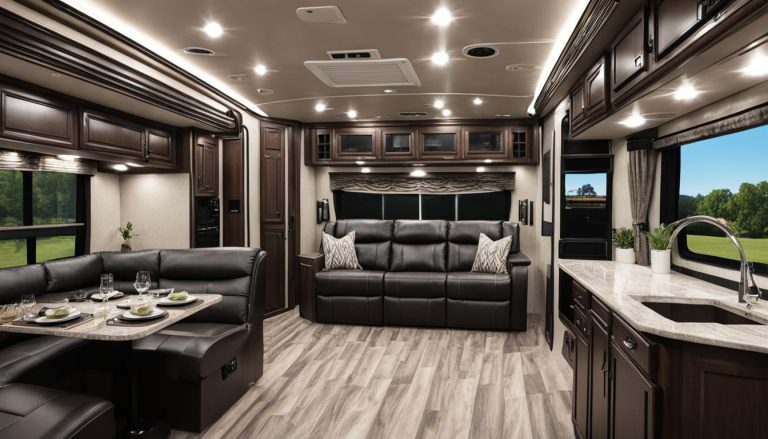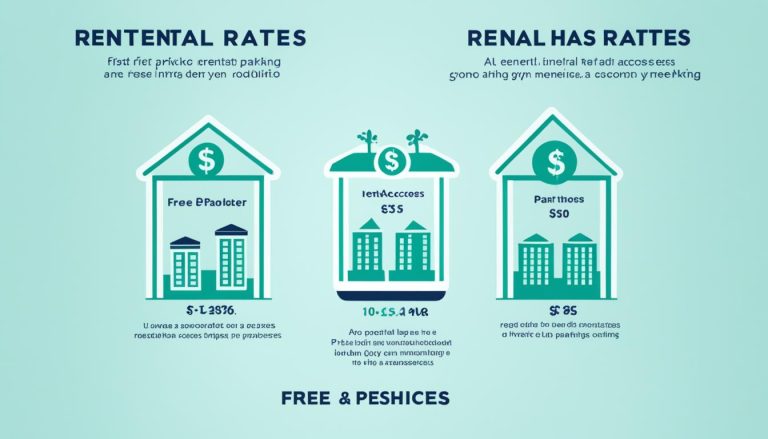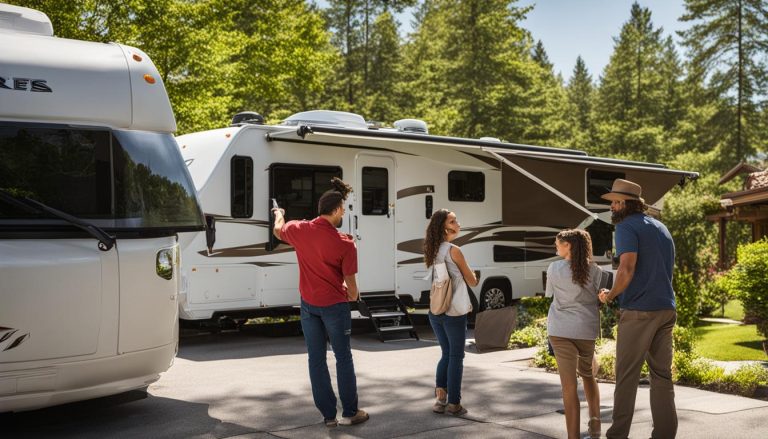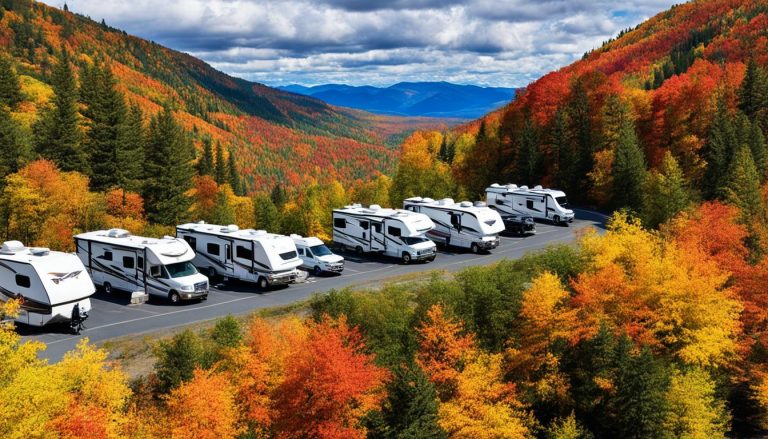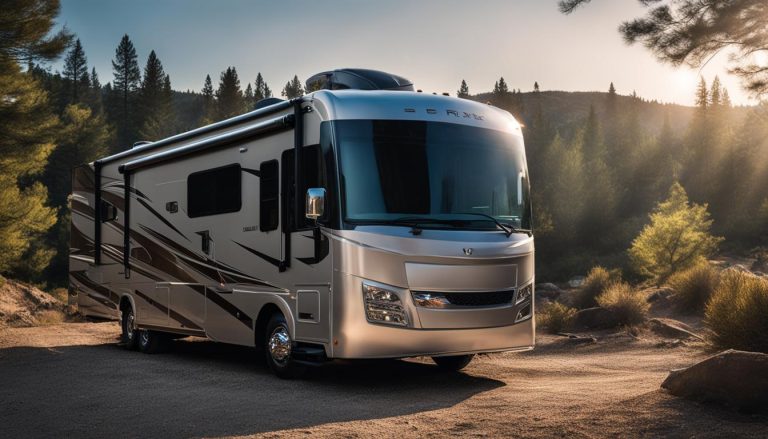Sanitize Your RV Water System: A Step-by-Step Guide
gorvlifestyle.com and its partners may earn a commission if you purchase a product through one of our links
Sanitizing your RV water system is an important step in maintaining a safe and healthy camping experience. Whether you’re preparing your RV for the season or want to ensure clean water during your trip, it’s crucial to properly sanitize the water system. In this step-by-step guide, we’ll walk you through the process of sanitizing your RV water system, including how often to do it and what materials you’ll need.
Key Takeaways:
- Sanitizing your RV water system is essential for maintaining clean and safe water during camping.
- Regular sanitization helps ensure safe water for drinking, showering, and cooking in your RV.
- Consider using an RV water filter when filling your tank for the cleanest water possible.
- Maintaining a clean RV water system involves regularly checking for leaks, cleaning faucets and showerheads, and emptying and cleaning gray and black water tanks.
- Follow the step-by-step guide and implement proper maintenance practices to ensure the longevity and effectiveness of your RV water system.
How Often Should You Sanitize Your RV Water System?
The frequency of sanitizing your RV water system depends on how often you use it and how long it sits unused. Most RVers choose to sanitize their water system once a year, usually in the spring before the camping season begins. However, if your RV has been sitting unused for more than 2-4 weeks, it’s recommended to sanitize it again before using it. Regular sanitization helps ensure safe water for drinking, showering, and cooking in your RV.
What Do You Need to Sanitize Your RV Water System?
Sanitizing your RV water system is an essential part of maintaining clean and safe water while on the road. To properly clean your RV water system, you’ll need a few basic items:
- A measuring cup
- A funnel
- A 5-gallon bucket or water storage container
- A potable water hose
- Non-scented bleach or RV tank sanitizer
- A water tank filler (optional)
These items can easily be found at your local camping or RV supply store. When choosing a bleach or sanitizer, make sure to select one that is safe for all components of your RV’s water system. It’s important to follow the manufacturer’s guidelines for the recommended amount of bleach or sanitizer based on the size of your RV’s fresh water tank.
How to Sanitize Your RV Fresh Water Tank with Bleach
Before sanitizing your RV water system, it’s essential to turn off your water heater and water pump. Draining your freshwater system with the water heater on can cause damage to the tank.
Once you’ve drained the system, calculate the amount of bleach you’ll need based on the size of your fresh water tank. Dilute the bleach in a gallon of water and add it to your fresh water tank using a funnel or water tank filler.
Fill the tank with potable water, pump it through the system, and let it sit for 12-24 hours.
| Steps | Action |
|---|---|
| 1 | Turn off the water heater and water pump |
| 2 | Drain the RV water system |
| 3 | Calculate the amount of bleach |
| 4 | Dilute the bleach and add it to the fresh water tank |
| 5 | Fill the tank with potable water |
| 6 | Pump the water through the system |
| 7 | Let it sit for 12-24 hours |
| 8 | Drain the system and flush it to remove residual bleach |
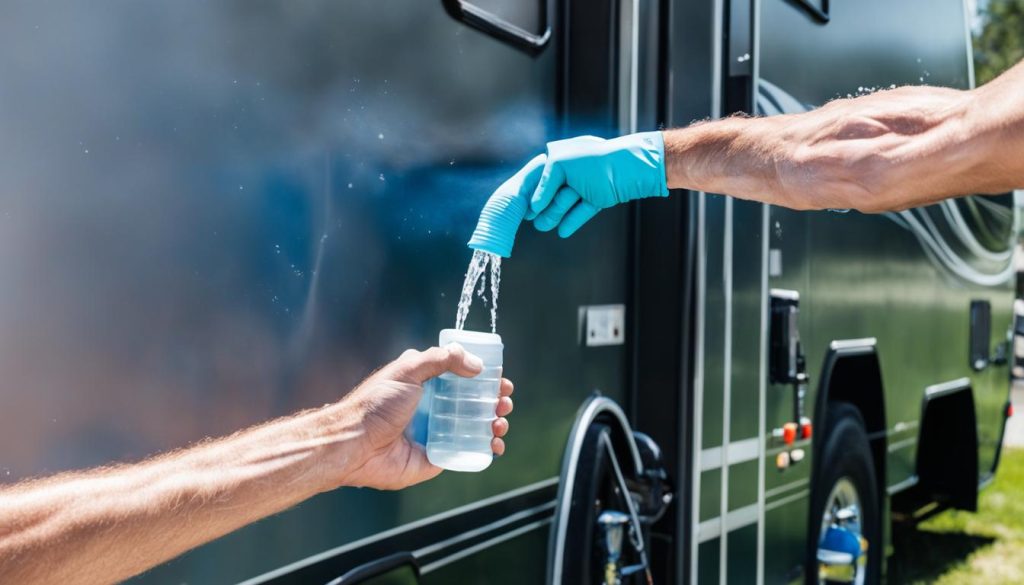
Important Tips:
- Be sure to use the recommended amount of bleach or sanitizer based on the size of your RV’s fresh water tank.
- Use a bleach solution that is safe for all components of your RV’s water system.
- Do not let the bleach mixture sit for more than 24 hours, as it can be harmful.
Additional Tips for RV Water System Sanitization
In addition to following the step-by-step process, there are a few additional tips to keep in mind when sanitizing your RV water system.
- Consider using an RV water filter when filling your tank to ensure the cleanest water possible.
- If your RV has a dual fuel tank (electric and propane), ensure that you separate the water system from the water heater to avoid damaging the anode rod.
- It’s also important to avoid letting the bleach mixture sit for more than 24 hours, as it can be harmful.
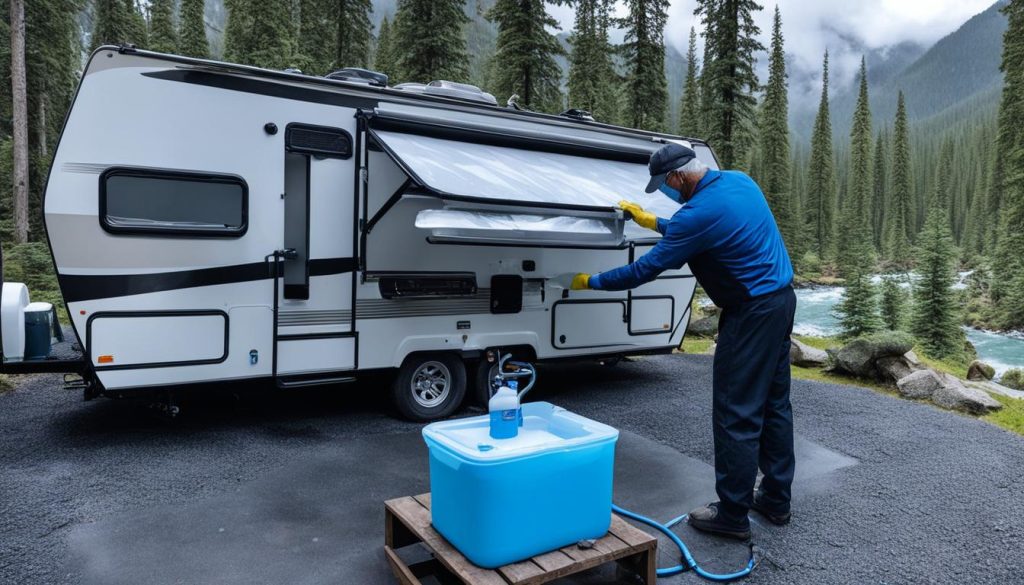
By following these additional tips, you can enhance the effectiveness of your RV water system disinfection process and enjoy a worry-free camping experience.
Maintaining a Clean RV Water System
Sanitizing your RV water system is just one part of maintaining a clean and healthy water system. To ensure the longevity and effectiveness of your RV water system, there are several important maintenance practices to keep in mind.
Regularly checking for leaks
Leaks in your RV’s water system can lead to waste and potential damage. Regularly inspect all connections, pipes, and fixtures for any signs of leaks. If you notice any drips or leaks, take the necessary steps to fix them promptly.
Cleaning the faucets and showerheads
Over time, mineral deposits and debris can build up in your RV’s faucets and showerheads, affecting water flow and quality. Regularly clean these fixtures by removing and soaking them in a solution of vinegar and water. Scrub away any accumulated residue and rinse thoroughly before reattaching.
Using a water purification system
A water purification system can help improve the quality of your RV’s water supply. Consider installing an inline water filter or a whole-house water filtration system to remove impurities and ensure cleaner water for drinking, cooking, and bathing.
Emptying and cleaning the gray water and black water tanks
Regularly emptying and cleaning the gray water and black water tanks is crucial for preventing odors and build-up. Follow the manufacturer’s instructions to safely and effectively clean these tanks. Use appropriate cleaning agents and ensure proper disposal of waste in designated areas.
By following these maintenance practices, you can keep your RV’s water system in good condition, providing you with clean and safe water throughout your travels.
Common Questions About RV Water System Sanitization
If you’re new to RVing or just want to ensure you’re maintaining a clean and safe water system, you may have some questions about RV water system sanitization. We’ve compiled a list of frequently asked questions to help clear up any confusion:
1. How often should I sanitize my RV water system?
It’s generally recommended to sanitize your RV water system at least once a year, preferably before the camping season begins. However, if your RV has been sitting unused for more than 2-4 weeks, it’s a good idea to sanitize it again before use.
2. Can I use regular household bleach to sanitize my RV water system?
Yes, you can use regular household bleach to sanitize your RV water system. However, make sure to use non-scented bleach and follow the recommended dilution ratios for your RV’s fresh water tank.
3. How long should I let the bleach solution sit in my RV water system?
It’s generally recommended to let the bleach solution sit in your RV water system for 12-24 hours. This allows enough time for the bleach to effectively kill any bacteria or contaminants.
4. Can I drink the water after sanitizing my RV water system?
After sanitizing your RV water system, it’s important to flush the system thoroughly to remove any residual bleach. Once the water runs clear and has no chlorine smell, it should be safe for drinking.
5. Do I need to sanitize my RV water system if I only use bottled water?
Even if you primarily use bottled water for drinking and cooking, it’s still important to sanitize your RV water system. Bacteria and contaminants can still accumulate in the system, especially in the water tank and pipes.
Remember, regular sanitization of your RV water system is crucial for maintaining clean and safe water during your camping adventures. If you have any other questions or concerns, consult your RV’s owner’s manual or reach out to a professional for assistance.
Conclusion
Regularly sanitizing your RV water system is crucial for ensuring clean and safe water during your camping adventures. By following the step-by-step guide outlined in this article and implementing proper maintenance practices, you can maintain the longevity and effectiveness of your RV water system.
Remember to always use recommended sanitization products and adhere to the manufacturer guidelines for your specific RV model. This will help ensure that you are using the right products and procedures for optimal results.
By prioritizing the sanitization of your RV water system, you can enjoy worry-free trips with refreshing and pure water. So, don’t forget to schedule regular sanitization sessions and keep your RV water system in excellent condition. Happy camping!
FAQ
How often should you sanitize your RV water system?
It is recommended to sanitize your RV water system once a year, preferably in the spring before the camping season begins. If your RV has been sitting unused for more than 2-4 weeks, it is advisable to sanitize it again before use.
What do you need to sanitize your RV water system?
To sanitize your RV water system, you will need a measuring cup, funnel, 5-gallon bucket or water storage container, potable water hose, non-scented bleach or RV tank sanitizer, and a water tank filler (optional).
How do you sanitize your RV fresh water tank with bleach?
To sanitize your RV fresh water tank with bleach, first turn off your water heater and water pump. Then, drain the fresh water system and calculate the amount of bleach you will need based on the tank size. Dilute the bleach in a gallon of water and add it to the fresh water tank. Fill the tank with potable water, pump it through the system, and let it sit for 12-24 hours. Finally, drain the system and flush it to remove any residual bleach.
What are some additional tips for RV water system sanitization?
Some additional tips for RV water system sanitization include using an RV water filter when filling your tank, separating the water system from the water heater if your RV has a dual fuel tank, and avoiding letting the bleach mixture sit for more than 24 hours.
How do you maintain a clean RV water system?
To maintain a clean RV water system, regularly check for leaks, clean the faucets and showerheads, use a water purification system, and empty and clean the gray water and black water tanks regularly to prevent odors and build-up.
What are some common questions about RV water system sanitization?
Some common questions about RV water system sanitization include how often to sanitize, what products to use, and how to avoid damaging the system.

